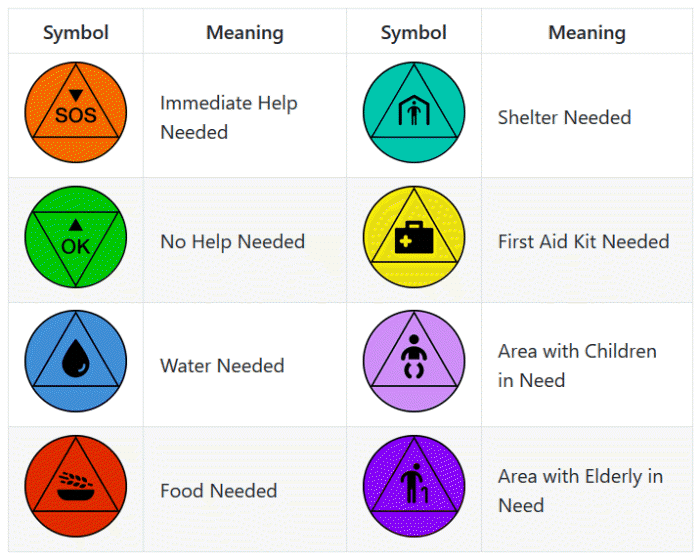
Unlike drone helicopters and satellites, it has become a tool that plays an important role in disaster relief, from being able to take aerial photos and videos inexpensively and quickly. IBM is releasing a DroneAid open source library that recognizes victim SOS messages in videos taken using such drones.
Drone-Aid recognizes symbols representing SOS messages found in aerial photographs. Visual recognition learning is performed using an open source image annotation tool and Cloud Annotation, and an object search function is used to identify symbols such as SOS.
For symbols recognized by drone aid, victims can request help by using a symbol kit or by drawing a symbol on the ground or paper for choking, etc. The symbol was made as a reference to an icon provided by OCHA, the United Nations Office for Humanitarian Affairs.
The symbol SOS is used when there is a serious injury and needs immediate help. Different symbols are used when there is no major damage and all victims are alive and need no help. Also, the water droplet symbol is used to signal lack of water. A sign that depicts a barley-like picture indicates food shortages, and a sign that looks like a person is in the house indicates that only Lee Jae-man has no place to evacuate due to the collapse of a building. A first-aid kit indicates that there are injured people in the affected area and needs first aid. A child icon means that there are young children in the affected area, and a symbol with a cane indicates that there is an elderly person in the affected area.

The video, including the SOS message captured by the drone, is a structure that streams and captures a web application on the PC side, and aggregates the SOS image obtained from the image in the web application.
DroneAid was created when developer Pedro Cruz developed and won DroneAid at the Hackathon (Call for Code) held in Puerto Rico. He came up with the idea of a drone aid while experiencing typhoon Maria, which occurred in September 2017. After the typhoon left, I tried to go to my grandmother’s house to confirm her survival, but due to the damage of a hurricane, she was unable to pass the road. He flew his drone to his grandmother’s house, and fortunately confirmed that the grandmother was safe. However, I found SOS messages asking for water and food all over the road.
Looking at the victim’s SOS message, he came up with the idea to have the drone automatically recognize the SOS message through optical character recognition. Because it is difficult to accurately detect handwriting, we standardized the SOS message and devised a symbol that could be a universal language.
He assumes printing by mat type or leaving green symbols on the road or on the roof in case of a disaster. Write the symbol on the left side of the mat and the number of people living in your home and area on the right. Cruise said that it would like to standardize local residents to have a drone-aid mat and disclose the meaning of the sign and how to use the mat to residents before a disaster occurs. Related information can be found here .


















Add comment